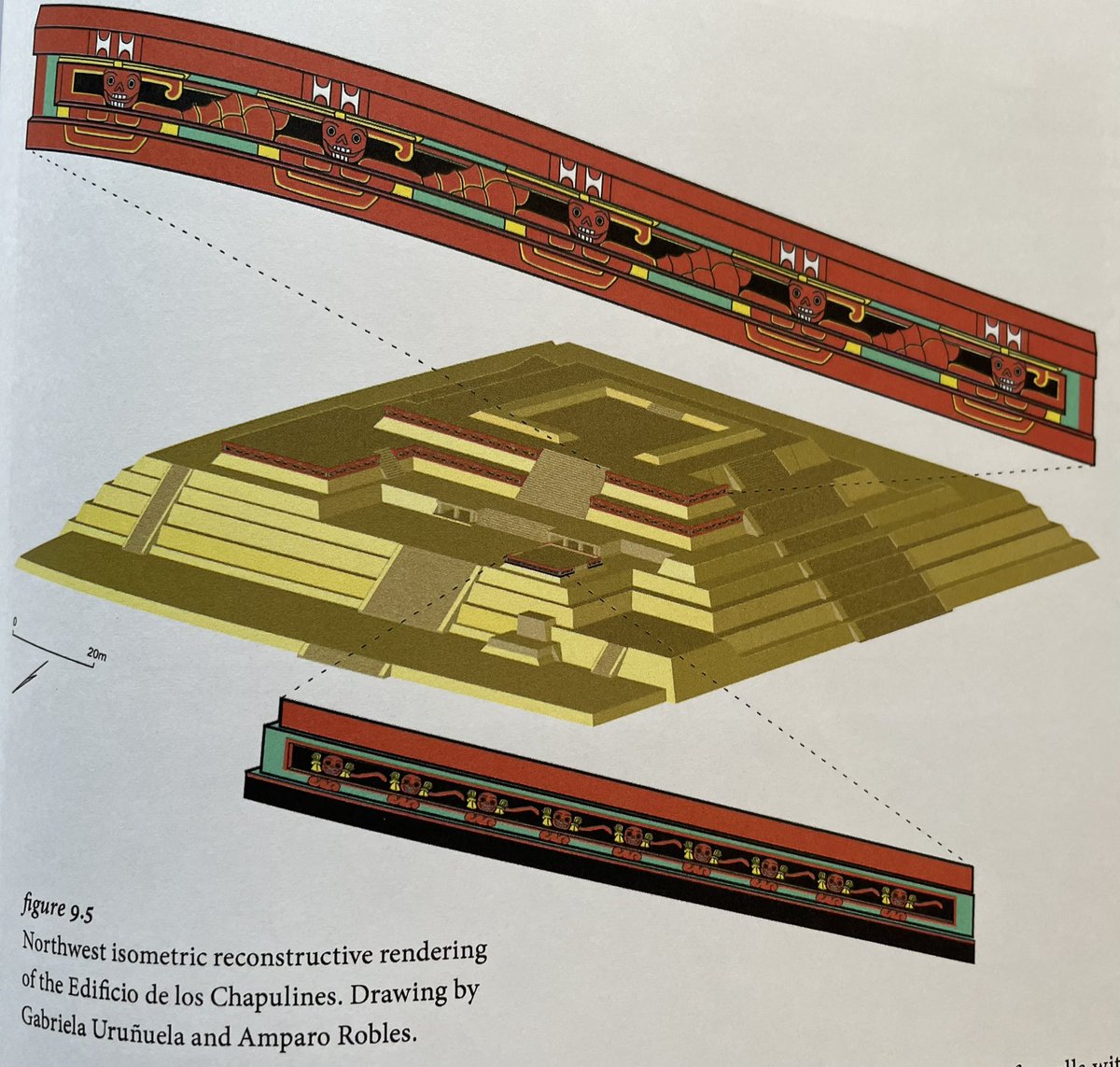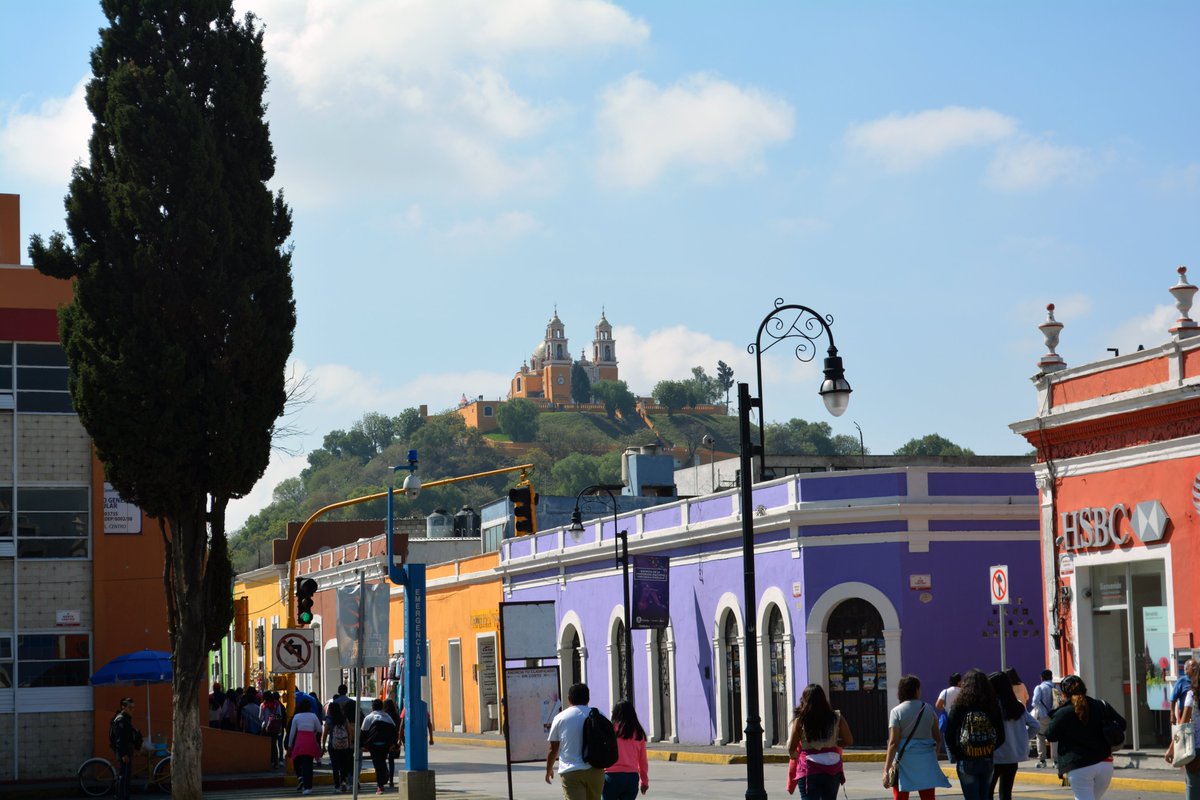
I haven’t watched #AncientApocolypse, but have read enough to be disappointed with @netflix giving a platform for the delusions of one man rather than the teams who have studied #Cholula for decades, led recently by Mexican women. Here’s some of their excellent work. 1/6 

Cholula’s great pyramid is very securely dated to the first millennium CE, generally contemporaneous with those of #Teotihuacan. Here, Uruñela and Plunket (2020) present it’s early construction phases in relation to Teo’s Moon Pyramid. 2/6 

The first monumental structure, known as Edificio de Los Chapulines, had a very different layout from Teotihuacan’s however, presenting an acropolis like form, expertly recreated here by @amparischen 3/6 

The pyramids most famous murales are later and are called the Mural de Los Bebedores, for depictions of a pulcazo. Pulque is the Indigenous fermented drink of highland Mexico, made from agave sap. Maybe whoever green lit #AncientApocolypse had drunk a lot of it. 4/6 

By the Aztec period the great pyramid had fallen into disuse but was called the Tlachihualtepetl (“human made mountain”) and is depicted as a large hill in this Native map. The more recent pyramid to Quetzalcoatl is depicted at center but was dismantled by the conquistadors. 5/6 

Quetzalcoatl, the Feathered Serpent, is known as Kukulcan by the Maya, and as Namor in #WakandaForever. If you want good fantasy watch that not #AncientApocolypse. Fin 

Last point: that Cholula was occupied a very long time ago, and that we don’t really know the “mysteries” is so much more boring/useless than that it is probably the longest lived city in the Western Hemisphere, densely settled for over 2000 years. What can we learn from them?
• • •
Missing some Tweet in this thread? You can try to
force a refresh







